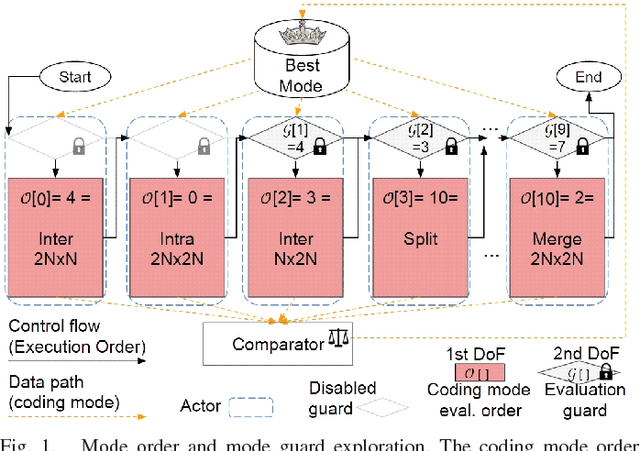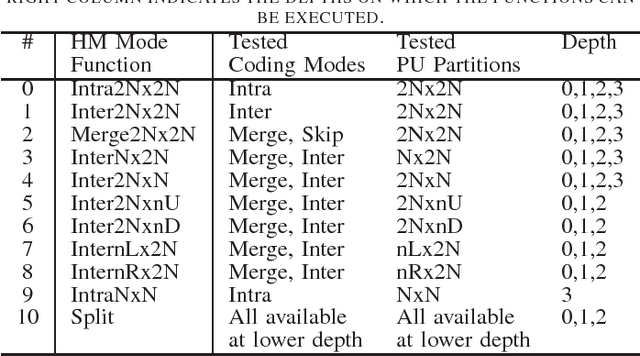Rafael Rosales
BEA: Revisiting anchor-based object detection DNN using Budding Ensemble Architecture
Sep 19, 2023



Abstract:This paper introduces the Budding Ensemble Architecture (BEA), a novel reduced ensemble architecture for anchor-based object detection models. Object detection models are crucial in vision-based tasks, particularly in autonomous systems. They should provide precise bounding box detections while also calibrating their predicted confidence scores, leading to higher-quality uncertainty estimates. However, current models may make erroneous decisions due to false positives receiving high scores or true positives being discarded due to low scores. BEA aims to address these issues. The proposed loss functions in BEA improve the confidence score calibration and lower the uncertainty error, which results in a better distinction of true and false positives and, eventually, higher accuracy of the object detection models. Both Base-YOLOv3 and SSD models were enhanced using the BEA method and its proposed loss functions. The BEA on Base-YOLOv3 trained on the KITTI dataset results in a 6% and 3.7% increase in mAP and AP50, respectively. Utilizing a well-balanced uncertainty estimation threshold to discard samples in real-time even leads to a 9.6% higher AP50 than its base model. This is attributed to a 40% increase in the area under the AP50-based retention curve used to measure the quality of calibration of confidence scores. Furthermore, BEA-YOLOV3 trained on KITTI provides superior out-of-distribution detection on Citypersons, BDD100K, and COCO datasets compared to the ensembles and vanilla models of YOLOv3 and Gaussian-YOLOv3.
Exploring Resiliency to Natural Image Corruptions in Deep Learning using Design Diversity
Mar 15, 2023Abstract:In this paper, we investigate the relationship between diversity metrics, accuracy, and resiliency to natural image corruptions of Deep Learning (DL) image classifier ensembles. We investigate the potential of an attribution-based diversity metric to improve the known accuracy-diversity trade-off of the typical prediction-based diversity. Our motivation is based on analytical studies of design diversity that have shown that a reduction of common failure modes is possible if diversity of design choices is achieved. Using ResNet50 as a comparison baseline, we evaluate the resiliency of multiple individual DL model architectures against dataset distribution shifts corresponding to natural image corruptions. We compare ensembles created with diverse model architectures trained either independently or through a Neural Architecture Search technique and evaluate the correlation of prediction-based and attribution-based diversity to the final ensemble accuracy. We evaluate a set of diversity enforcement heuristics based on negative correlation learning to assess the final ensemble resilience to natural image corruptions and inspect the resulting prediction, activation, and attribution diversity. Our key observations are: 1) model architecture is more important for resiliency than model size or model accuracy, 2) attribution-based diversity is less negatively correlated to the ensemble accuracy than prediction-based diversity, 3) a balanced loss function of individual and ensemble accuracy creates more resilient ensembles for image natural corruptions, 4) architecture diversity produces more diversity in all explored diversity metrics: predictions, attributions, and activations.
Evaluation of Confidence-based Ensembling in Deep Learning Image Classification
Mar 03, 2023Abstract:Ensembling is a successful technique to improve the performance of machine learning (ML) models. Conf-Ensemble is an adaptation to Boosting to create ensembles based on model confidence instead of model errors to better classify difficult edge-cases. The key idea is to create successive model experts for samples that were difficult (not necessarily incorrectly classified) by the preceding model. This technique has been shown to provide better results than boosting in binary-classification with a small feature space (~80 features). In this paper, we evaluate the Conf-Ensemble approach in the much more complex task of image classification with the ImageNet dataset (224x224x3 features with 1000 classes). Image classification is an important benchmark for AI-based perception and thus it helps to assess if this method can be used in safety-critical applications using ML ensembles. Our experiments indicate that in a complex multi-label classification task, the expected benefit of specialization on complex input samples cannot be achieved with a small sample set, i.e., a good classifier seems to rely on very complex feature analysis that cannot be well trained on just a limited subset of "difficult samples". We propose an improvement to Conf-Ensemble to increase the number of samples fed to successive ensemble members, and a three-member Conf-Ensemble using this improvement was able to surpass a single model in accuracy, although the amount is not significant. Our findings shed light on the limits of the approach and the non-triviality of harnessing big data.
Multi-Objective Design Space Exploration for the Optimization of the HEVC Mode Decision Process
Mar 03, 2022



Abstract:Finding the best possible encoding decisions for compressing a video sequence is a highly complex problem. In this work, we propose a multi-objective Design Space Exploration (DSE) method to automatically find HEVC encoder implementations that are optimized for several different criteria. The DSE shall optimize the coding mode evaluation order of the mode decision process and jointly explore early skip conditions to minimize the four objectives a) bitrate, b) distortion, c) encoding time, and d) decoding energy. In this context, we use a SystemC-based actor model of the HM test model encoder for the evaluation of each explored solution. The evaluation that is based on real measurements shows that our framework can automatically generate encoder solutions that save more than 60% of encoding time or 3% of decoding energy when accepting bitrate increases of around 3%.
 Add to Chrome
Add to Chrome Add to Firefox
Add to Firefox Add to Edge
Add to Edge